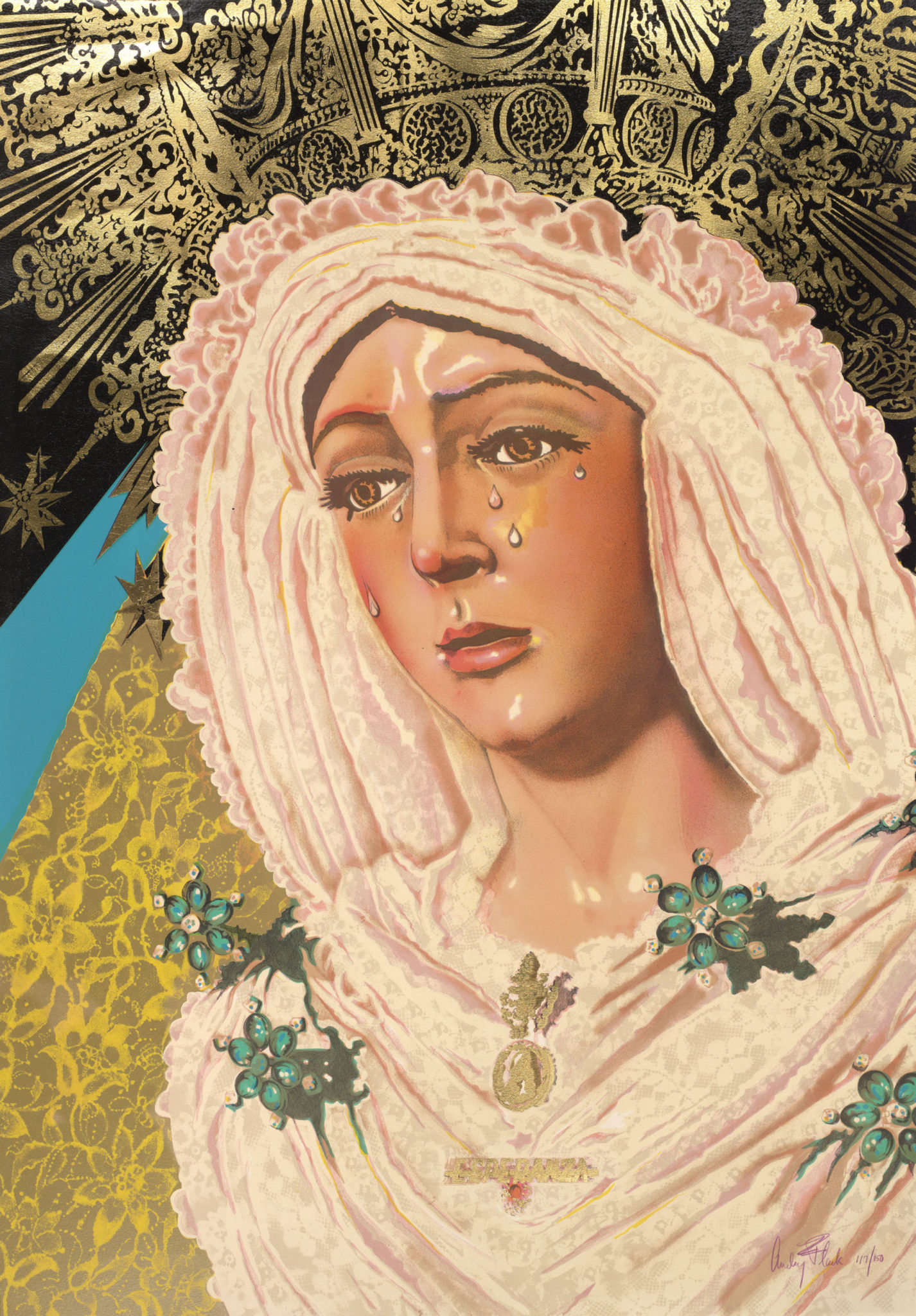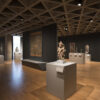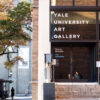Yale University Art Gallery curates special exhibition honoring female alumni artists
“On the Basis of Art: 150 Years of Women at Yale” was curated to commemorate the 150th anniversary of Yale’s first female students and display art created by Yale-educated female artists.

Audrey Flack (B.F.A. 1952), Lady Madonna, 1972. Lithograph. Yale University Art Gallery, Gift of Dr. and Mrs. Samuel S. Mandel, M.D. © Audrey Flack Courtesy of YUAG
On Sept. 10 — a year after the originally scheduled date — an exhibition called “On the Basis of Art: 150 Years of Women at Yale” went on view at the Yale University Art Gallery. The exhibition showcases art from the mid-1880s to present created by Yale-trained female-identifying artists.
The exhibition commemorates the 150th anniversary of the first female students at Yale University as well as the 50th anniversary of coeducation at Yale College. Several artists featured in the exhibition are alumni of the Yale School of the Fine Arts, which became the first Yale school to admit female students upon opening in 1869. The exhibition contains six thematic sections, each spanning a variety of artistic mediums, styles and time periods.
“The exhibition demonstrates how these Yale-trained female artists brought an unwavering determination, bold experimentation and a spirit of risk-taking to their practice — qualities that were critical to their success in the international art world,” said YUAG Director Stephanie Wiles in an email to the News. “These talented women artists made our world a more exciting, rewarding, and thought-provoking place through their art and I am delighted to share their extraordinary work with our visitors.
Elisabeth Hodermarsky, YUAG’s curator of prints and drawings and lead curator for this exhibition, worked with other students and a team of curators: Judy Ditner, associate curator of photography and digital media; John Stuart Gordon, curator of American decorative arts; Keely Orgeman, associate curator of modern and contemporary art; Sydney Skelton Simon, assistant curator of academic affairs; and Molleen Theodore, associate curator of programs.
The exhibition highlights the works of 79 female artists, including Emma Bacon, who completed her studies in 1885, Audrey Flack ART ’52, Eva Hesse ART ’59, Sylvia Plimack Mangold ART ’61, Howardena Pindell ART ’67, Roni Horn ART ’78, Maya Lin ’81 ARC ’86, Sarah Sze ’91, An-My Lê ART ’93, Mickalene Thomas ART ’02, Mary Reid Kelley ART ’09 and Njideka Akunyili Crosby ART ’11.
The exhibition is not curated according to a single stylistic approach; rather, it consists of six broader thematic sections. Each section simultaneously displays themes of realism, abstraction and figuration while highlighting several artistic mediums including painting, sculpture, photography and video.
According to Hodermarsky, these begin with a section called “Carving a Presence.” The remaining sections touch on topics such as myth and legend, two and three-dimensional space and identity. The final section, “Casting History, Etching Memory,” includes studies for the Vietnam Veterans Memorial by Maya Lin and other pieces exploring memorializations and reflections of the past.
As part of the project, curators also wanted to record oral histories of the featured artists. Graduate and undergraduate students and fellows largely conducted these recordings, parts of which were then incorporated into the exhibition’s audio guide.
“My practice has evolved and takes multiple scales and forms, always in response to the conditions and questions evoked by the place where I’m working,” artist Ann Hamilton ART ’85 narrates in the audio guide.
In addition to the exhibition, contributors wrote an accompanying book by the same title. The book includes an introduction written by Hodermarsky, essays by curators Helen A. Cooper, Linda Konheim Kramer and Marta Kuzma, quotes from featured artists and artwork images. Hodermarsky said the book makes art its focal point, rather than the editorial writing, and features a full spread for each of the 79 featured artists.
Hodermarsky called this book the project’s “lasting monument,” and said it is Yale’s first history of visual art that centers the female perspective.
“All the other histories of the visual arts at Yale have either been written or heavily quoted from past histories of the School of Art told by men,” Hodermarsky said. “This really is giving primacy to female voices about their experiences.”
The book contains three sections, each corresponding to a historical period: the School of Art’s first years between 1869 and 1949, between 1950 and 1969 — the period during which German artist Josef Albers, chair of the school’s Department of Design from 1950 to 1958, modernized the then-antiquated School of Art’s curriculum — and the period leading up to the present day.
Each section contains a historic timeline highlighting important international, national and local events during these time periods. Hodermarsky noted that these are meant to ground the reader in that period’s art world.
Hodermarsky said the exhibition’s yearlong delay has allowed the public to view the show in-person, which was not possible last fall. She also recognized that the extra year enriched the accompanying book.
“It is kind of triumphant that it is happening,” said Hodermarsky. “Even if it is a year late.”
“One the Basis of Art: 150 Years of Women at Yale” will remain on view until Jan 9, 2022.
Correction, Sept. 16: A previous version of this article stated that the exhibition “On the Basis of Art” showcases 100 years’ worth of art by female artists at Yale, when in reality the exhibition showcases work from the mid-1880s onward. It also mistakenly referred to photography as “traditional media.” This version has been updated.










